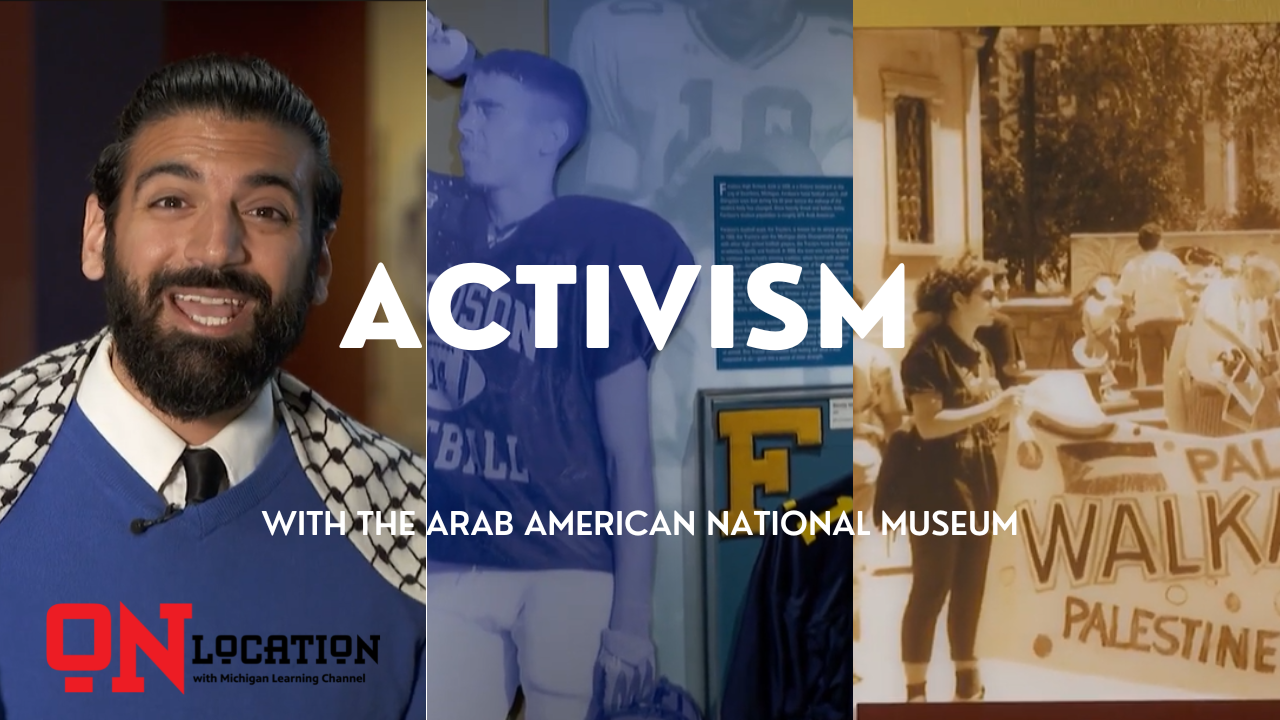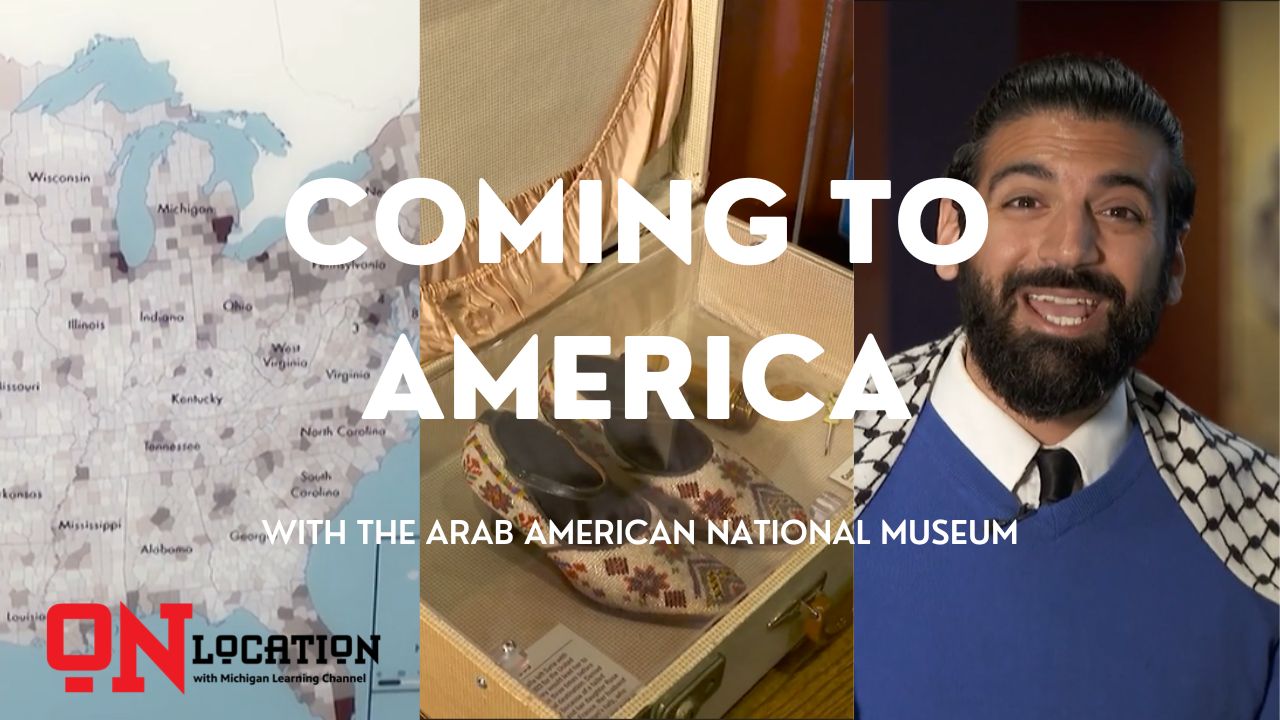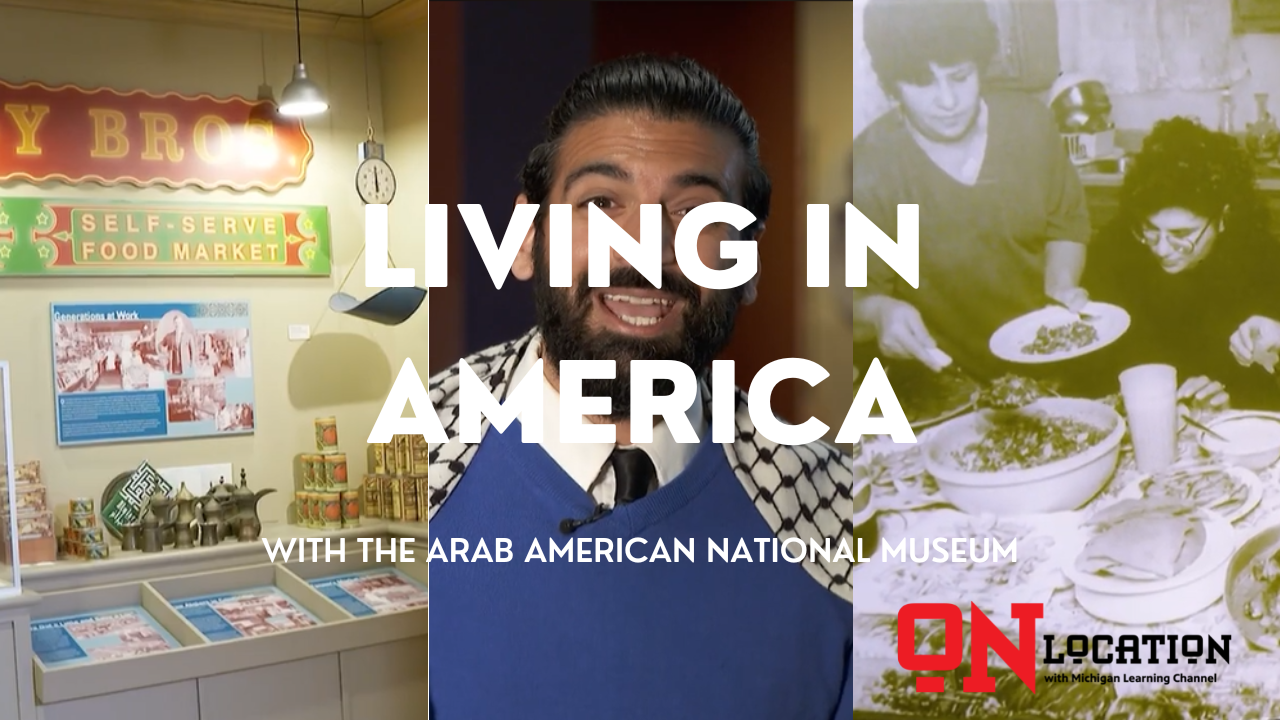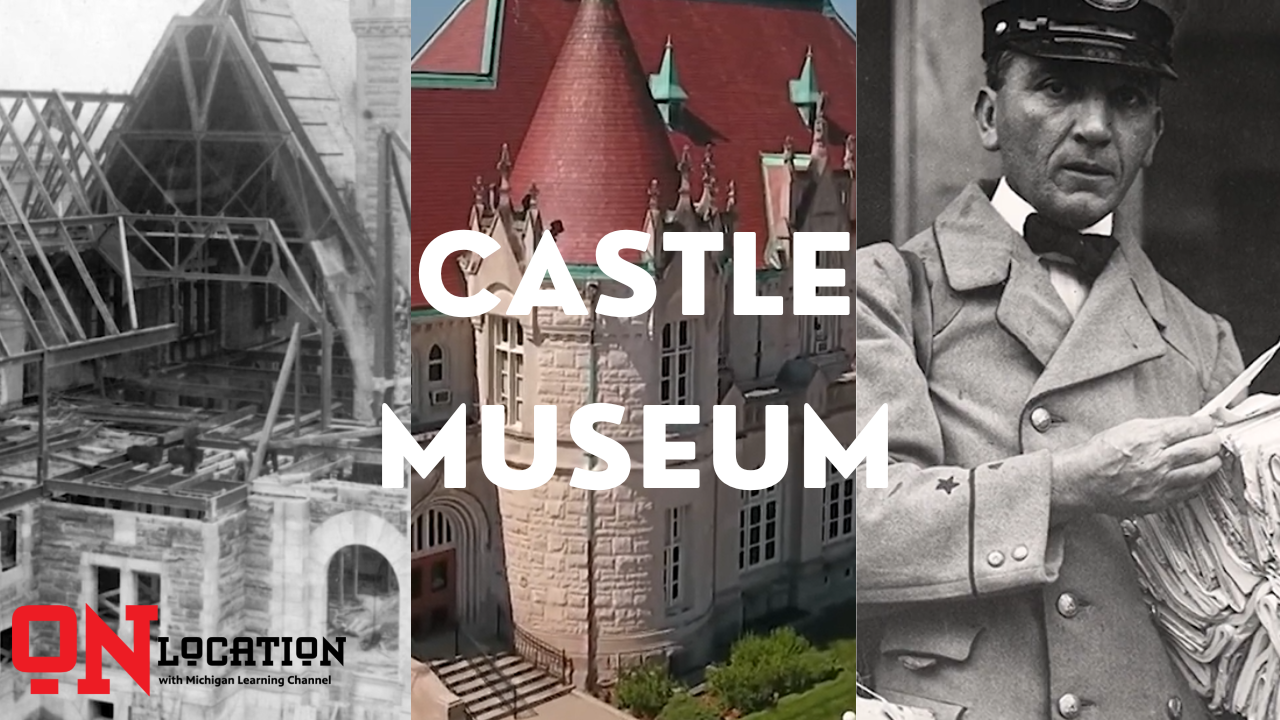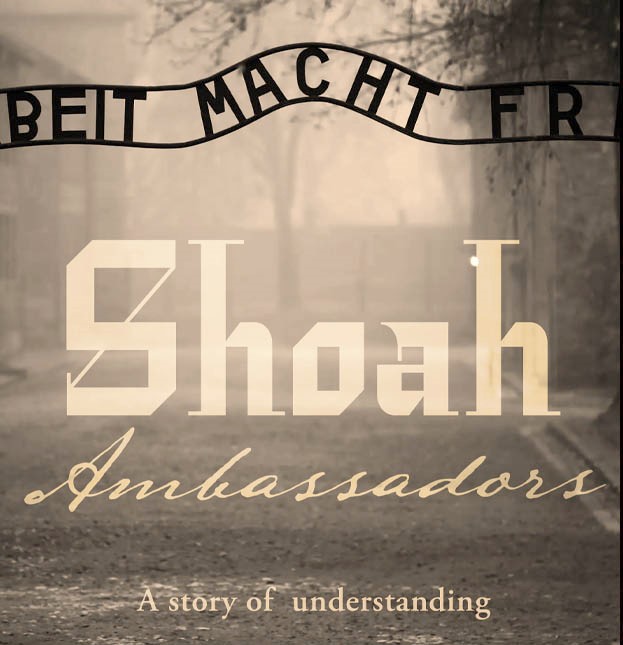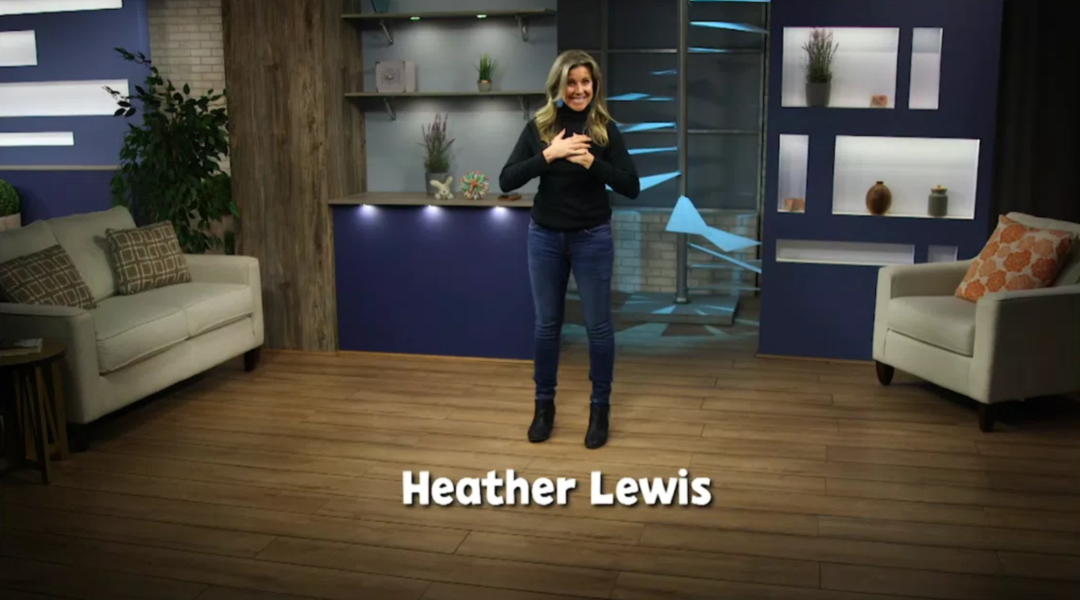Subjects
Grades
Shows
Standards
Arabic Language - Learn about how you can use the words in the world all around us to help teach early learners about words and letters, while also teaching them about the world. تعرف على كيفية استخدام الكلمات الموجودة في العالم من حولنا للمساعدة في تعليم المتعلمين الأوائل حول الكلمات والحروف ، مع تعليمهم أيضًا عن العالم.
Reading out loud is fundamental to early learning. Learn some helpful tips to get the most out of shared reading time.
Leer en voz alta es fundamental para el aprendizaje temprano. Conozca algunos consejos útiles para aprovechar al máximo el tiempo de lectura compartida. Reading out loud is fundamental to early learning. Learn some helpful tips to get the most out of shared reading time.
Arabic Language - Reading out loud is fundamental to early learning. Learn some helpful tips to get the most out of shared reading time. القراءة بصوت عالٍ أمر أساسي للتعلم المبكر. تعرف على بعض النصائح المفيدة لتحقيق أقصى استفادة من وقت القراءة المشترك.
Infants and toddlers learn best when their basic needs are taken care of and when they feel loved and safe. Learn some simple things you can do to set the stage for learning.
Los bebés y los niños pequeños aprenden mejor cuando se atienden sus necesidades básicas y cuando se sienten amados y seguros. Aprenda algunas cosas simples que puede hacer para preparar el escenario para el aprendizaje. Infants and toddlers learn best when their basic needs are taken care of and when they feel loved and safe. Learn some simple things you can do to set the stage for learning.
Arabic Language - Infants and toddlers learn best when their basic needs are taken care of and when they feel loved and safe. Learn some simple things you can do to set the stage for learning. يتعلم الرضع والأطفال الصغار بشكل أفضل عندما يتم الاهتمام باحتياجاتهم الأساسية وعندما يشعرون بالحب والأمان. تعلم بعض الأشياء البسيطة التي يمكنك القيام بها لتمهيد الطريق للتعلم.
Arabic Language - Learn how you can help the early learns in your life build the skills and muscles needed to be great writers. تعلم كيف يمكنك مساعدة المتعلمين في وقت مبكر من حياتك على بناء المهارات والعضلات اللازمة ليكونوا كتابا عظماء.
Aprenda cómo puede ayudar a los jóvenes estudiantes en su vida a desarrollar las habilidades y los músculos para ser grandes escritores. Learn how you can help the early learns in your life build the skills and muscles needed to be great writers.
Tips on using how using your child's name can help develop writing skills.
Usar el nombre de su hijo puede ayudar a desarrollar habilidades de escritura. Tips on using how using your child's name can help develop writing skills.
Arabic Language - Tips on using how using your child's name can help develop writing skills. نصائح حول كيفية استخدام اسم طفلك يمكن أن تساعد في تطوير مهارات الكتابة.
How can a walk around your neighborhood, grocery store, or even just in your imagination help build literacy skills? Find out in this segment of Ready to ROAR!
"¿Cómo puede un paseo por su vecindario, tienda de comida o simplemente en su imaginación ayudar a desarrollar habilidades de alfabetización? Descúbrelo en este segmento de Ready to ROAR! How can a walk around your neighborhood, grocery store, or even just in your imagination help build literacy skills? Find out in this segment of Ready to ROAR!
Arabic Language - How can a walk around your neighborhood, grocery store, or even just in your imagination help build literacy skills? Find out in this segment of Ready to ROAR! كيف يمكن للتجول في منطقتك أو محل بقالتك أو حتى مجرد مخيلتك أن يساعد في بناء مهارات معرفة القراءة والكتابة؟ اكتشف ذلك في هذا الجزء من Ready to ROAR!
Lesson 4
Meet with Elizabeth Bairactaris to learn about her career as a manager in strategic projects for supply chain at Domino’s [...]
Lesson 3
Meet with Janice David to learn about her career as a program leader of digital experience at Domino’s Pizza.
Find out about Robotics Engineering and the careers you can have in the field.
Veterinarians care for the health of animals and work to improve public health. They diagnose, treat, and research medical conditions and diseases of pets, livestock, and other animals.
Watch Marcia Backstrom, DVM, veterinarian and senior clinician at BluePearl Veterinary Partners in Ann Arbor, Michigan, describe her typical day as an emergency care doctor.
Watch Marcia Backstrom, DVM, veterinarian and senior clinician at BluePearl Veterinary Partners in Ann Arbor, Michigan, describe her typical day as an emergency care doctor.
Veterinarian Marcia Backstrom shares valuable career guidance and life advice.
Veterinarian Marcia Backstrom shares her best life advice.
Watch Violeta Garcia, Ph.D., STEM Activist and founder of STEM Learning By Design, share how her family fled El Salvador to America when she was a young child and how she started her life in America without knowing any English. She is a big believer in STEM careers because they pay well and will help to solve some of the world's biggest problems of the future. She gets inspiration from a famous Mexican proverb, "they tried to bury us but they didn’t know we were seeds.”
Watch STEM Activist Violeta García share why girls should consider a career in STEM.
An astronaut is a person trained to travel and work in space. Astronauts will continue to work aboard the International Space Station (ISS), and will also fly NASA’s new Orion deep space exploration vehicle. Orion will carry the crew to space, provide emergency abort capability, sustain the crew during the space travel, and provide safe re-entry from deep space return velocities.
Tracy Caldwell Dyson, Astronaut, compares the excitement of "launch" versus "landing".
Tracy Caldwell Dyson, Astronaut, her connection to American Sign Language and why she decided to be the first person to sign on the International Space Station.
Tracy Caldwell Dyson, Astronaut, describes preparing for and experiencing her first space walk.
Tracy Caldwell Dyson, Astronaut, describes how she discovered that she wanted to be an astronaut. She compares the excitement of "launch" versus "landing" and describes the thrill of being your own “satellite” during her three space walks.
Tracy Caldwell Dyson, Astronaut, describes what it's like working with Russian cosmonauts on the International Space Station.
Boys and girls get different levels of encouragement when it comes to STEM. Let's close the imagination gap so that all learners can pursue their interests.
Dancers and choreographers use dance performances to express ideas and stories. There are many types of dance, such as ballet, tango, modern dance, tap, and jazz.
Reporters, correspondents, and broadcast news analysts inform the public about news and events happening internationally, nationally, and locally. They report the news for newspapers, magazines, websites, television, and radio.
Nebila Abdulmelik is a freelance writer and photographer with a focus on storytelling. Nebila says kids should consider storytelling because it's a powerful tool that can help connect us with the past, with others and with ourselves.
Nebila Abdulmelik is a freelance writer and photographer with a focus on storytelling. Nebila says kids should consider storytelling because it's a powerful tool that can help connect us with the past, with others and with ourselves.
Nebila Abdulmelik, a freelance writer and photographer with a focus on storytelling. She finds it very rewarding to make a living on her own terms and work on projects that speak to her creativity and values. Nebila says kids should consider storytelling because it's a powerful tool that can help connect us with the past, with others and with ourselves.
Dive into the rich history, culture and commerce of our state.
Learn about rich history of activists and activism in the Arab American community including the modern day.
Learn about the four major periods of immigration from the 22 countries that make up the Arab world to the United States, and what push and pull factors lead to each era of immigration.
Explore the Living in America exhibit at the Arab American National Museum.
Explore Saginaw's Castle Museum. Learn all about its architecture, why it was built, and what it is today.
Learn about the Castle Museum's Automotive Production exhibit.
Learn about the history of the timber industry in Michigan by visiting the Castle Museum in Saginaw, Michigan.
Alexis Dahl takes us on a tour of the Maritime Museum in Marquette, Michigan. Learn all about how Lake Superior has impacted the lives of almost every Michigander.
Take a trip with Alexis Dahl to the Marquette Harbor Lighthouse. Learn about how lighthouses work and their fascinating history.
Lesson 6
See what students took away from the Great Lakes Broadcast and Sports Media Academy at Ford Field.
Bridge the chasm between the generation who endured the nightmare of World War II and today’s bright-eyed, tech-savvy youths, who may only have a limited grasp of what their elders suffered.
Lesson 1074
This mindfulness exercise will coach you on ways to focus on the good things when having a rough day.
Lesson 1096
Discover proper push up form and work your chest muscles in this fun fitness video.
Subjects
Grades
Shows
Arabic Language - Learn about how you can use the words in the world all around us to help teach early learners about words and letters, while also teaching them about the world. تعرف على كيفية استخدام الكلمات الموجودة في العالم من حولنا للمساعدة في تعليم المتعلمين الأوائل حول الكلمات والحروف ، مع تعليمهم أيضًا عن العالم.
Reading out loud is fundamental to early learning. Learn some helpful tips to get the most out of shared reading time.
Leer en voz alta es fundamental para el aprendizaje temprano. Conozca algunos consejos útiles para aprovechar al máximo el tiempo de lectura compartida. Reading out loud is fundamental to early learning. Learn some helpful tips to get the most out of shared reading time.
Arabic Language - Reading out loud is fundamental to early learning. Learn some helpful tips to get the most out of shared reading time. القراءة بصوت عالٍ أمر أساسي للتعلم المبكر. تعرف على بعض النصائح المفيدة لتحقيق أقصى استفادة من وقت القراءة المشترك.
Infants and toddlers learn best when their basic needs are taken care of and when they feel loved and safe. Learn some simple things you can do to set the stage for learning.
Los bebés y los niños pequeños aprenden mejor cuando se atienden sus necesidades básicas y cuando se sienten amados y seguros. Aprenda algunas cosas simples que puede hacer para preparar el escenario para el aprendizaje. Infants and toddlers learn best when their basic needs are taken care of and when they feel loved and safe. Learn some simple things you can do to set the stage for learning.
Arabic Language - Infants and toddlers learn best when their basic needs are taken care of and when they feel loved and safe. Learn some simple things you can do to set the stage for learning. يتعلم الرضع والأطفال الصغار بشكل أفضل عندما يتم الاهتمام باحتياجاتهم الأساسية وعندما يشعرون بالحب والأمان. تعلم بعض الأشياء البسيطة التي يمكنك القيام بها لتمهيد الطريق للتعلم.
Arabic Language - Learn how you can help the early learns in your life build the skills and muscles needed to be great writers. تعلم كيف يمكنك مساعدة المتعلمين في وقت مبكر من حياتك على بناء المهارات والعضلات اللازمة ليكونوا كتابا عظماء.
Aprenda cómo puede ayudar a los jóvenes estudiantes en su vida a desarrollar las habilidades y los músculos para ser grandes escritores. Learn how you can help the early learns in your life build the skills and muscles needed to be great writers.
Tips on using how using your child's name can help develop writing skills.
Usar el nombre de su hijo puede ayudar a desarrollar habilidades de escritura. Tips on using how using your child's name can help develop writing skills.
Arabic Language - Tips on using how using your child's name can help develop writing skills. نصائح حول كيفية استخدام اسم طفلك يمكن أن تساعد في تطوير مهارات الكتابة.
How can a walk around your neighborhood, grocery store, or even just in your imagination help build literacy skills? Find out in this segment of Ready to ROAR!
"¿Cómo puede un paseo por su vecindario, tienda de comida o simplemente en su imaginación ayudar a desarrollar habilidades de alfabetización? Descúbrelo en este segmento de Ready to ROAR! How can a walk around your neighborhood, grocery store, or even just in your imagination help build literacy skills? Find out in this segment of Ready to ROAR!
Arabic Language - How can a walk around your neighborhood, grocery store, or even just in your imagination help build literacy skills? Find out in this segment of Ready to ROAR! كيف يمكن للتجول في منطقتك أو محل بقالتك أو حتى مجرد مخيلتك أن يساعد في بناء مهارات معرفة القراءة والكتابة؟ اكتشف ذلك في هذا الجزء من Ready to ROAR!
Lesson 4
Meet with Elizabeth Bairactaris to learn about her career as a manager in strategic projects for supply chain at Domino’s [...]
Lesson 3
Meet with Janice David to learn about her career as a program leader of digital experience at Domino’s Pizza.
Find out about Robotics Engineering and the careers you can have in the field.
Veterinarians care for the health of animals and work to improve public health. They diagnose, treat, and research medical conditions and diseases of pets, livestock, and other animals.
Watch Marcia Backstrom, DVM, veterinarian and senior clinician at BluePearl Veterinary Partners in Ann Arbor, Michigan, describe her typical day as an emergency care doctor.
Watch Marcia Backstrom, DVM, veterinarian and senior clinician at BluePearl Veterinary Partners in Ann Arbor, Michigan, describe her typical day as an emergency care doctor.
Veterinarian Marcia Backstrom shares valuable career guidance and life advice.
Veterinarian Marcia Backstrom shares her best life advice.
Watch Violeta Garcia, Ph.D., STEM Activist and founder of STEM Learning By Design, share how her family fled El Salvador to America when she was a young child and how she started her life in America without knowing any English. She is a big believer in STEM careers because they pay well and will help to solve some of the world's biggest problems of the future. She gets inspiration from a famous Mexican proverb, "they tried to bury us but they didn’t know we were seeds.”
Watch STEM Activist Violeta García share why girls should consider a career in STEM.
An astronaut is a person trained to travel and work in space. Astronauts will continue to work aboard the International Space Station (ISS), and will also fly NASA’s new Orion deep space exploration vehicle. Orion will carry the crew to space, provide emergency abort capability, sustain the crew during the space travel, and provide safe re-entry from deep space return velocities.
Tracy Caldwell Dyson, Astronaut, compares the excitement of "launch" versus "landing".
Tracy Caldwell Dyson, Astronaut, her connection to American Sign Language and why she decided to be the first person to sign on the International Space Station.
Tracy Caldwell Dyson, Astronaut, describes preparing for and experiencing her first space walk.
Tracy Caldwell Dyson, Astronaut, describes how she discovered that she wanted to be an astronaut. She compares the excitement of "launch" versus "landing" and describes the thrill of being your own “satellite” during her three space walks.
Tracy Caldwell Dyson, Astronaut, describes what it's like working with Russian cosmonauts on the International Space Station.
Boys and girls get different levels of encouragement when it comes to STEM. Let's close the imagination gap so that all learners can pursue their interests.
Dancers and choreographers use dance performances to express ideas and stories. There are many types of dance, such as ballet, tango, modern dance, tap, and jazz.
Reporters, correspondents, and broadcast news analysts inform the public about news and events happening internationally, nationally, and locally. They report the news for newspapers, magazines, websites, television, and radio.
Nebila Abdulmelik is a freelance writer and photographer with a focus on storytelling. Nebila says kids should consider storytelling because it's a powerful tool that can help connect us with the past, with others and with ourselves.
Nebila Abdulmelik is a freelance writer and photographer with a focus on storytelling. Nebila says kids should consider storytelling because it's a powerful tool that can help connect us with the past, with others and with ourselves.
Nebila Abdulmelik, a freelance writer and photographer with a focus on storytelling. She finds it very rewarding to make a living on her own terms and work on projects that speak to her creativity and values. Nebila says kids should consider storytelling because it's a powerful tool that can help connect us with the past, with others and with ourselves.
Dive into the rich history, culture and commerce of our state.
Learn about rich history of activists and activism in the Arab American community including the modern day.
Learn about the four major periods of immigration from the 22 countries that make up the Arab world to the United States, and what push and pull factors lead to each era of immigration.
Explore the Living in America exhibit at the Arab American National Museum.
Explore Saginaw's Castle Museum. Learn all about its architecture, why it was built, and what it is today.
Learn about the Castle Museum's Automotive Production exhibit.
Learn about the history of the timber industry in Michigan by visiting the Castle Museum in Saginaw, Michigan.
Alexis Dahl takes us on a tour of the Maritime Museum in Marquette, Michigan. Learn all about how Lake Superior has impacted the lives of almost every Michigander.
Take a trip with Alexis Dahl to the Marquette Harbor Lighthouse. Learn about how lighthouses work and their fascinating history.
Lesson 6
See what students took away from the Great Lakes Broadcast and Sports Media Academy at Ford Field.
Bridge the chasm between the generation who endured the nightmare of World War II and today’s bright-eyed, tech-savvy youths, who may only have a limited grasp of what their elders suffered.
Lesson 1074
This mindfulness exercise will coach you on ways to focus on the good things when having a rough day.
Lesson 1096
Discover proper push up form and work your chest muscles in this fun fitness video.






